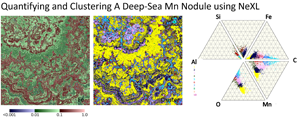Article contents
Reproducible Spectrum and Hyperspectrum Data Analysis Using NeXL
Published online by Cambridge University Press: 02 March 2022
Abstract

- Type
- Software and Instrumentation
- Information
- Copyright
- Copyright © The Author(s), 2022. Published by Cambridge University Press on behalf of the Microscopy Society of America
References
- 1
- Cited by





